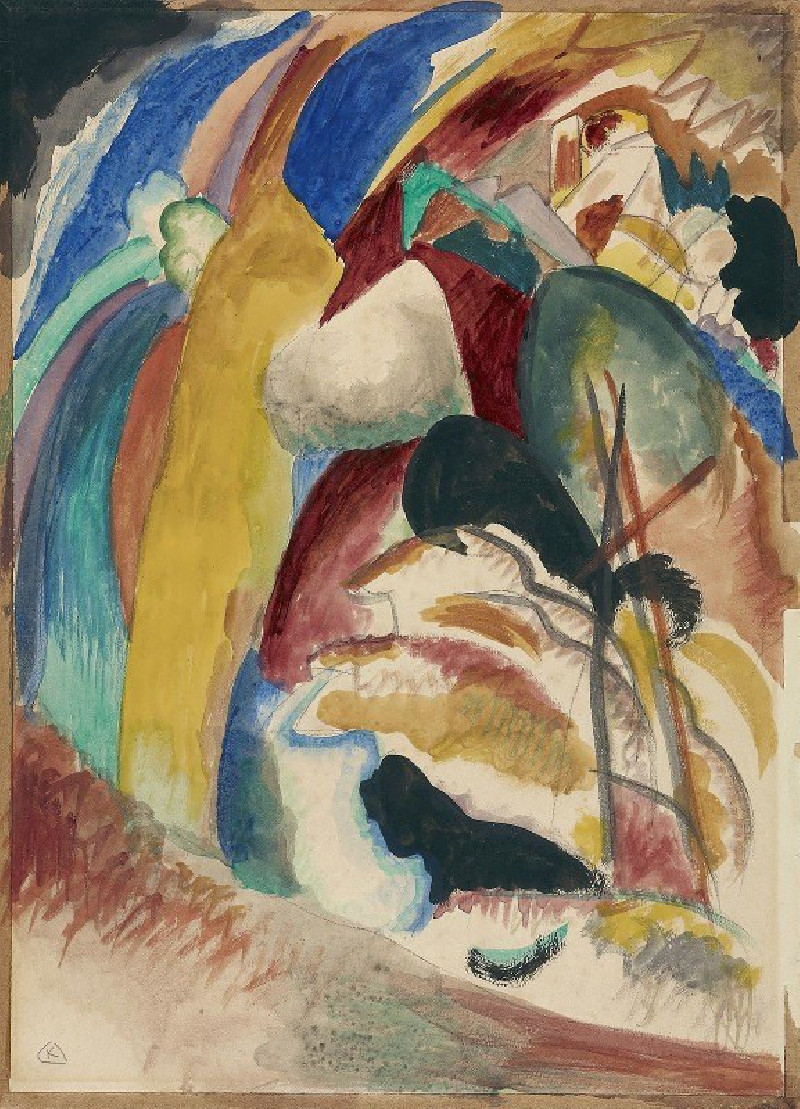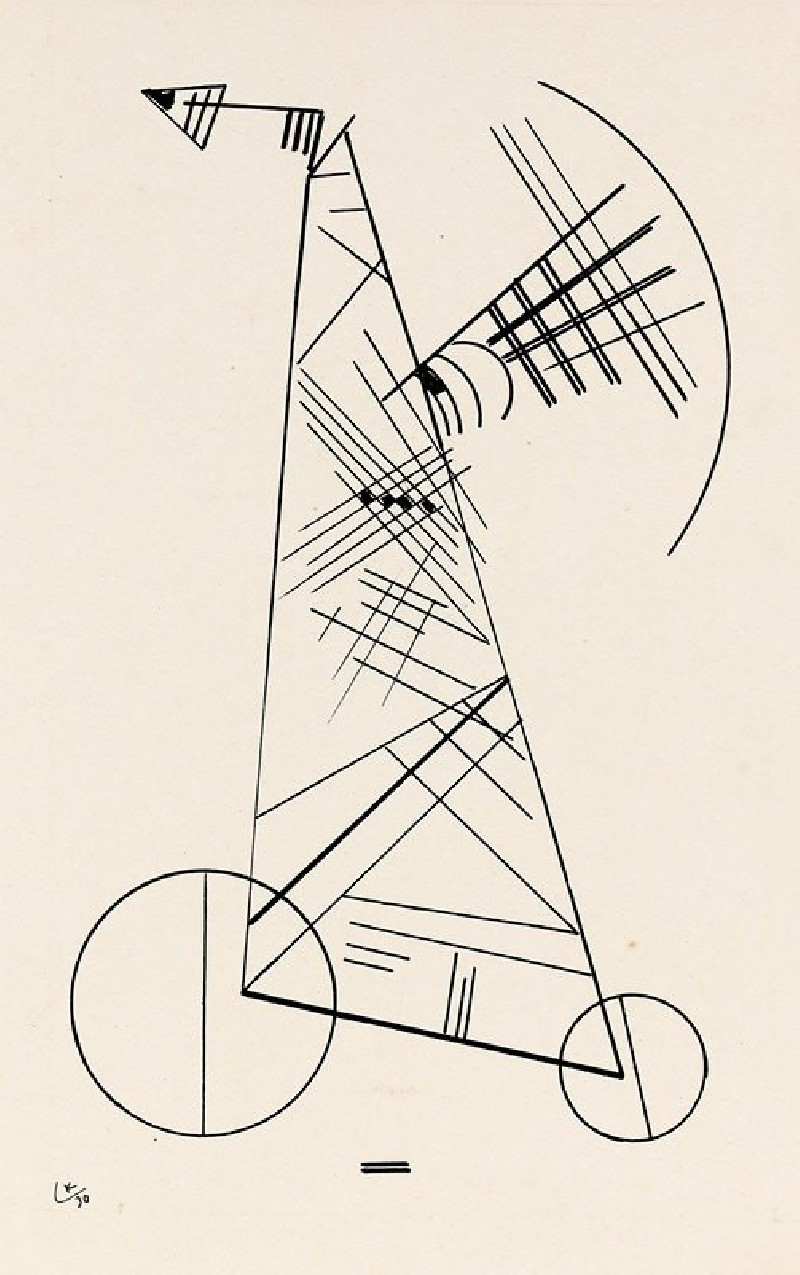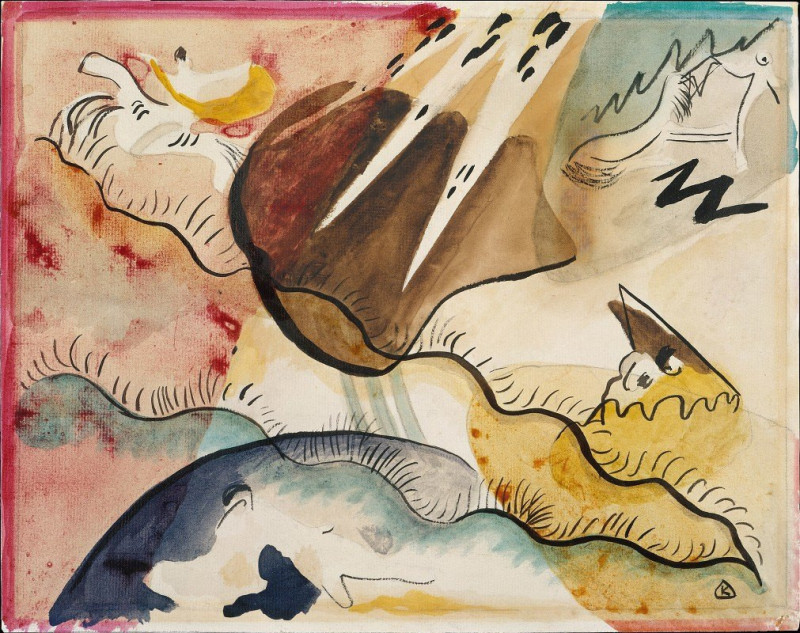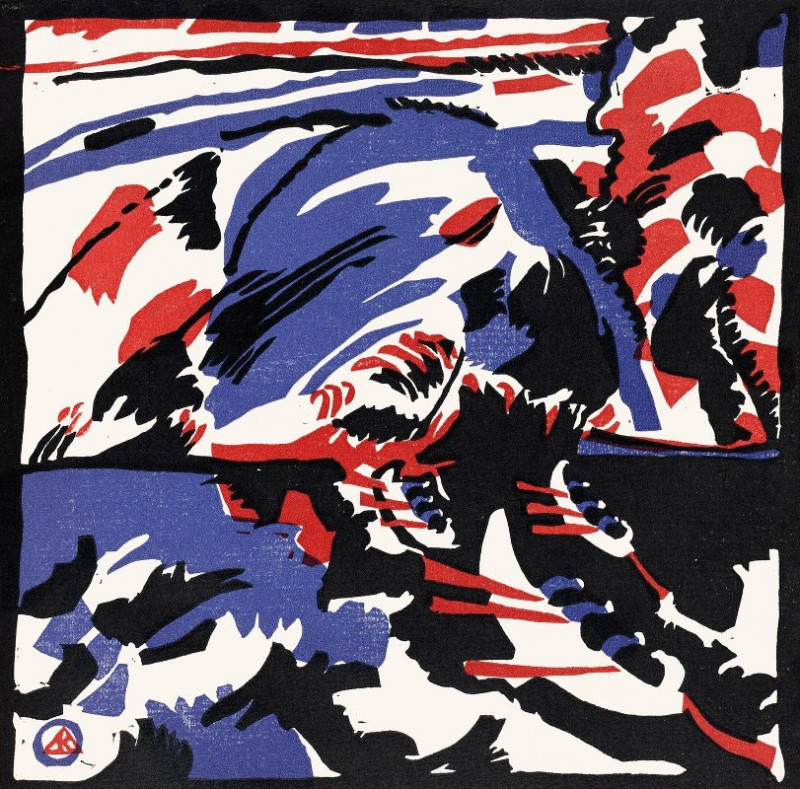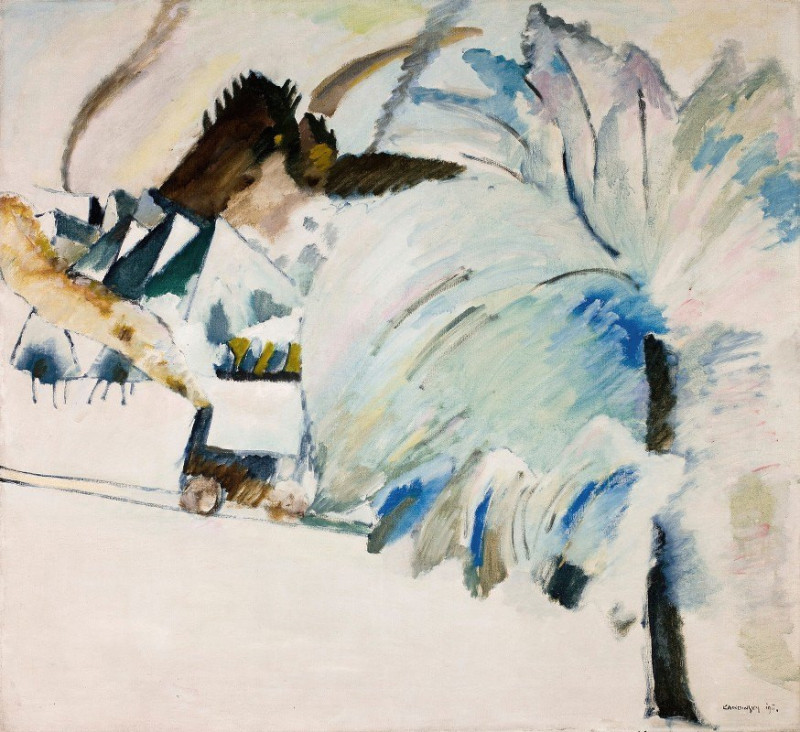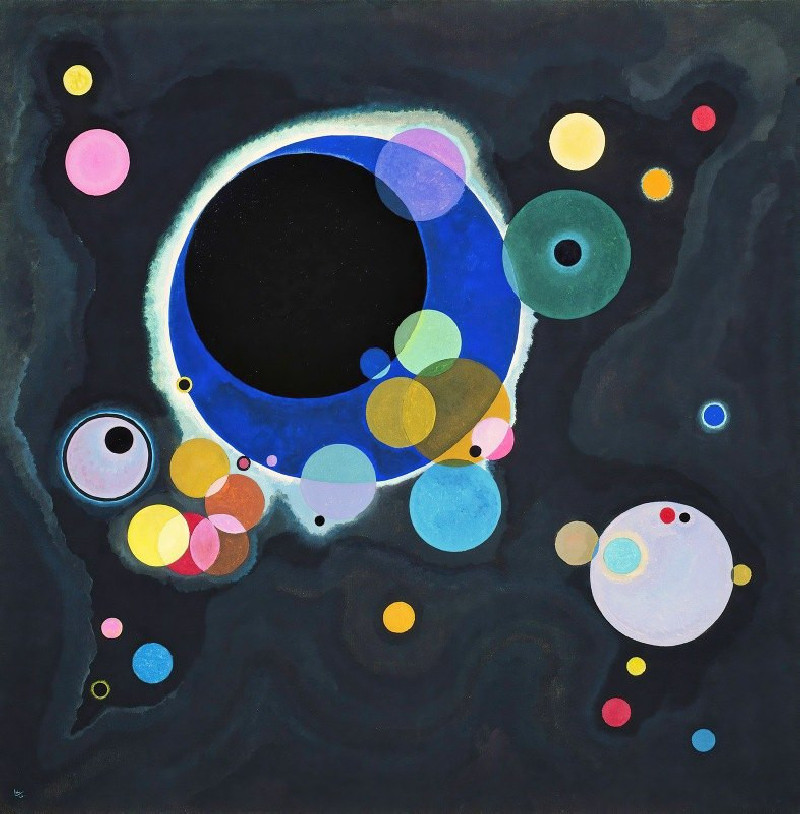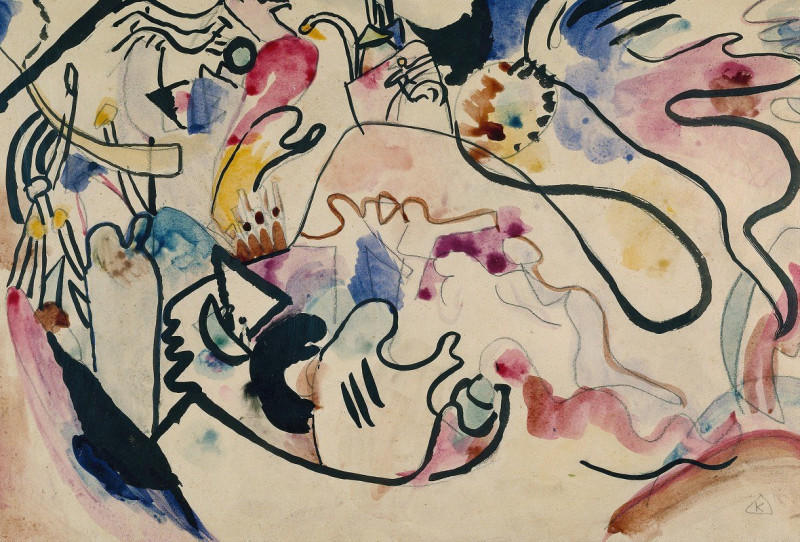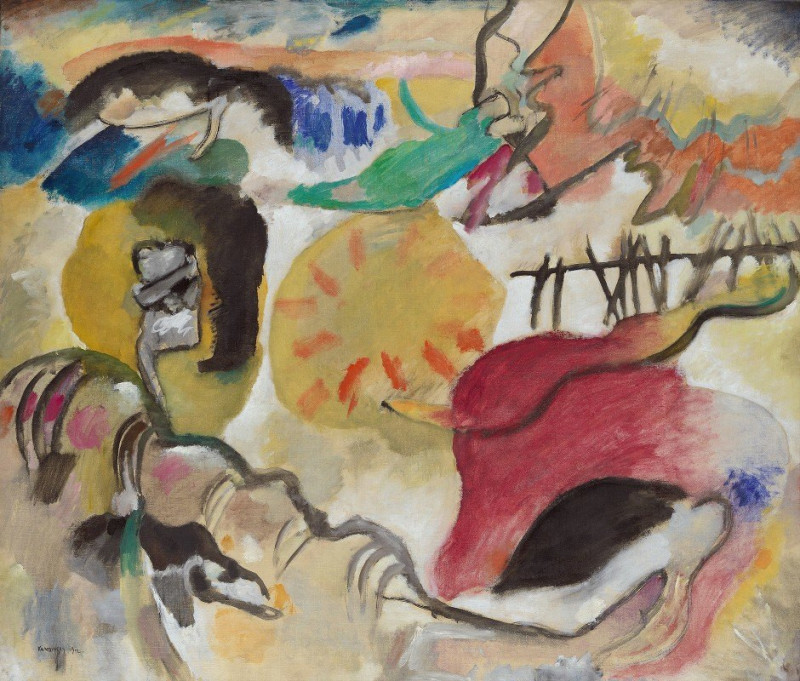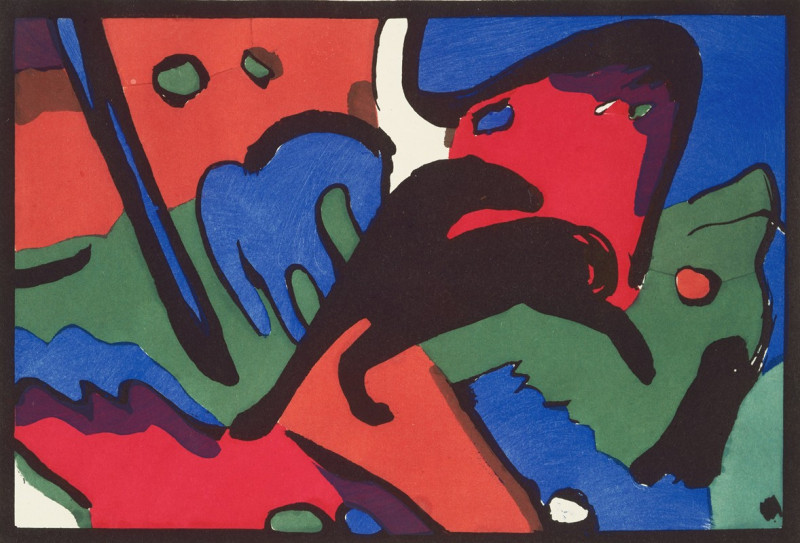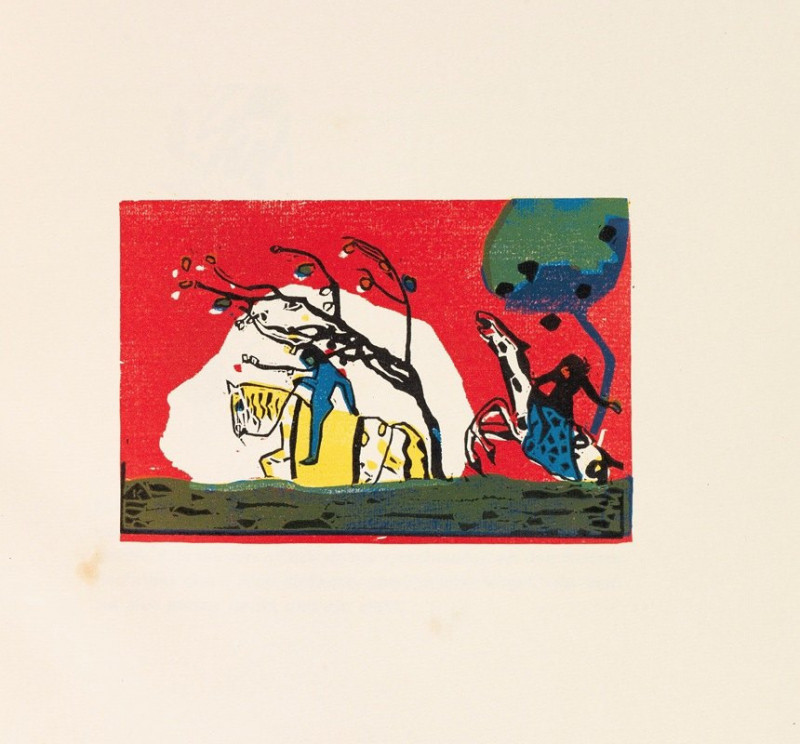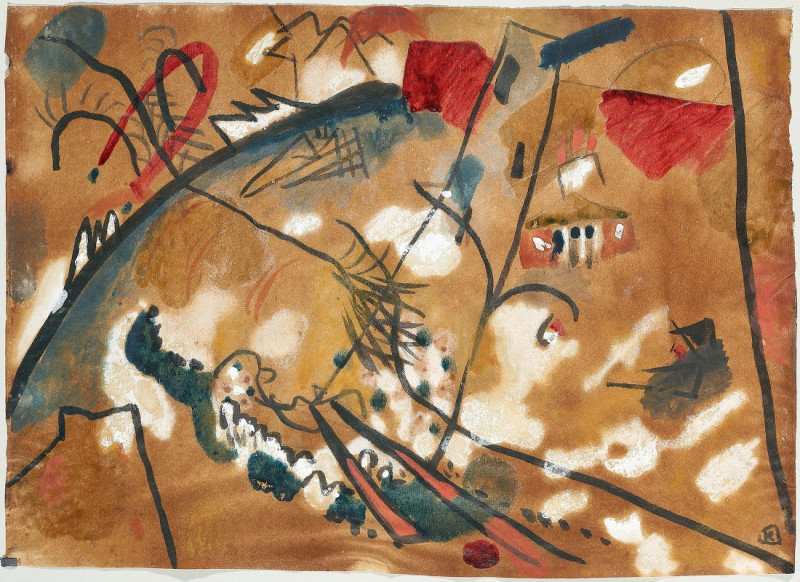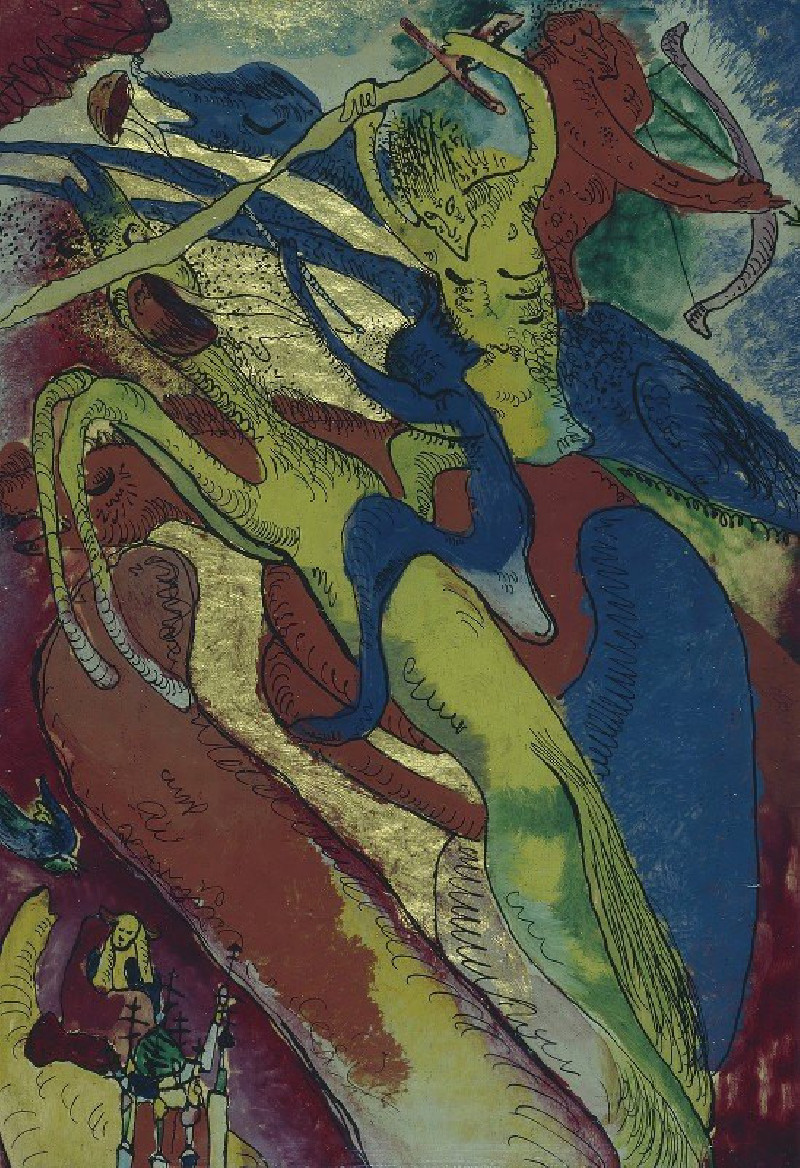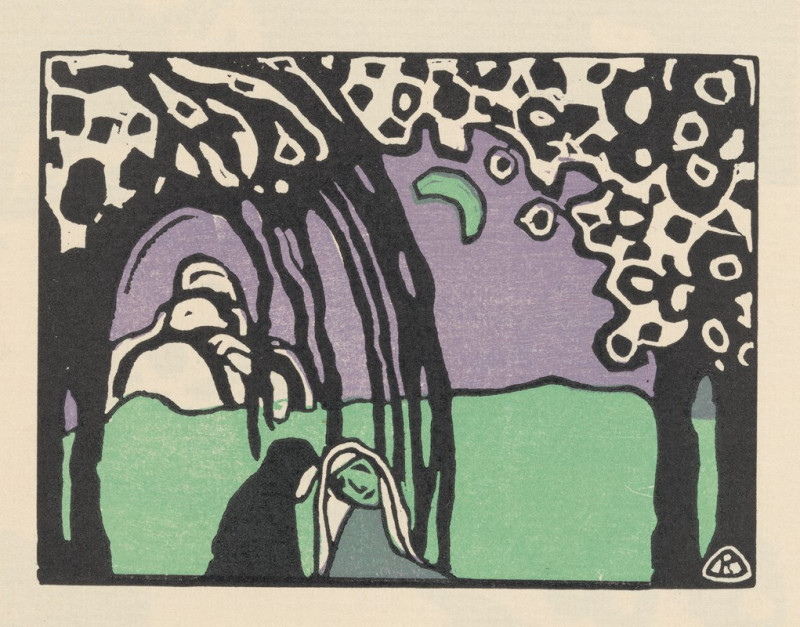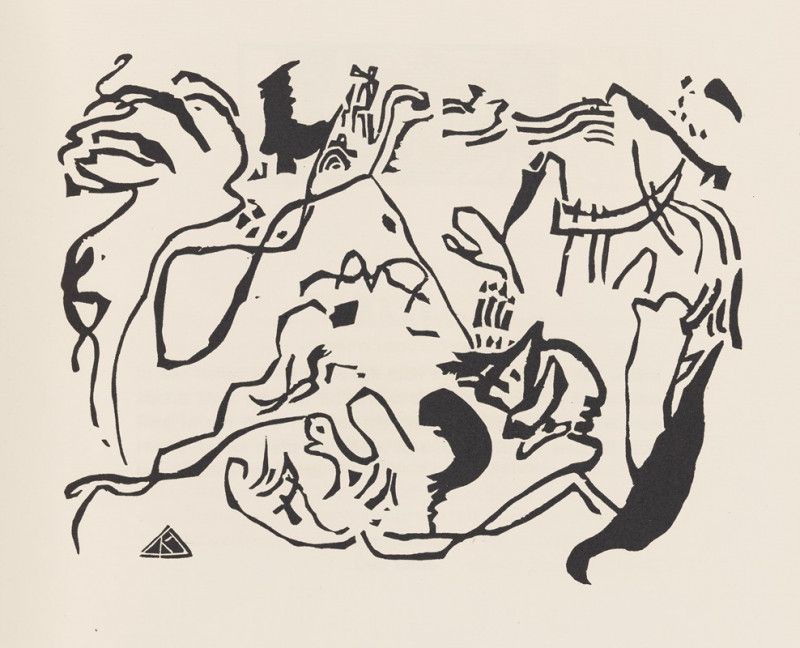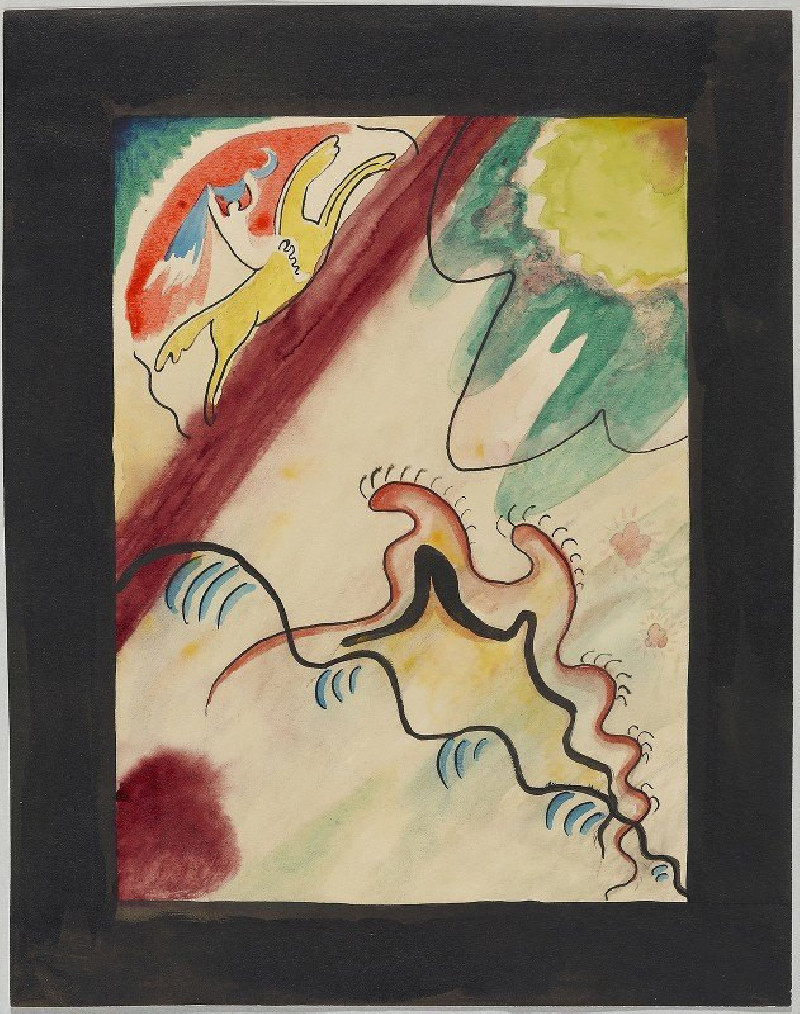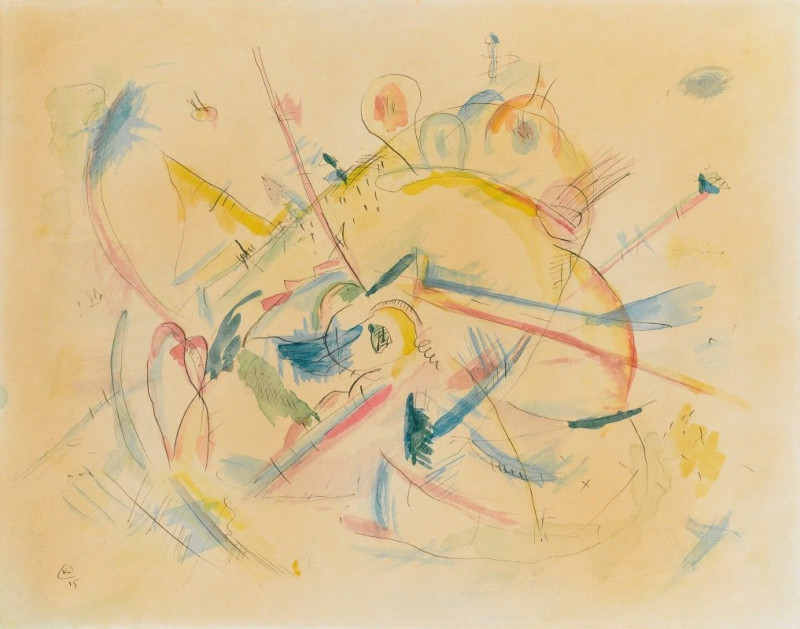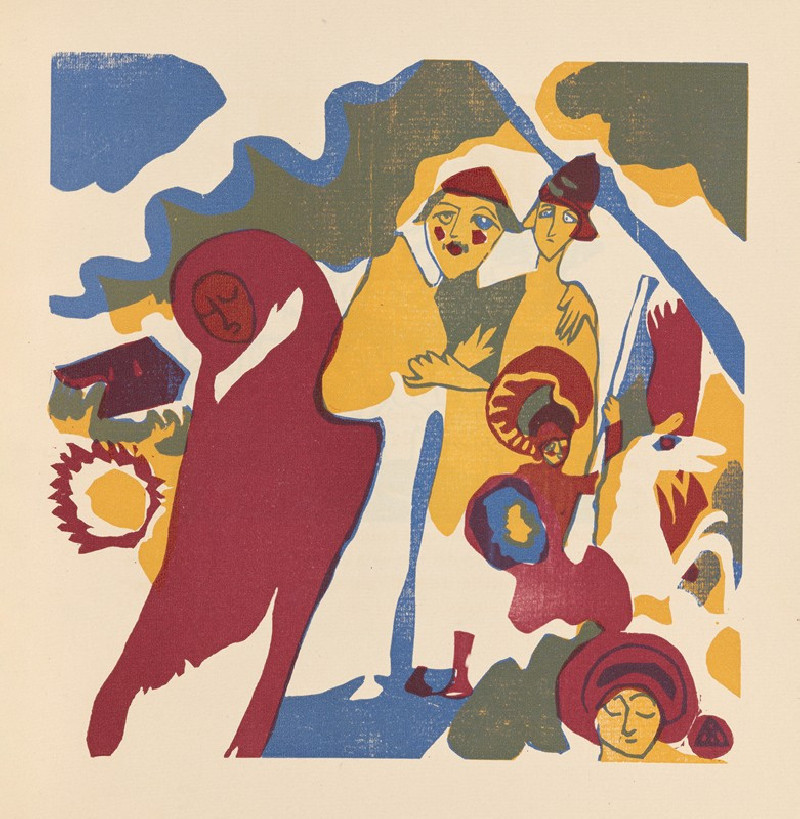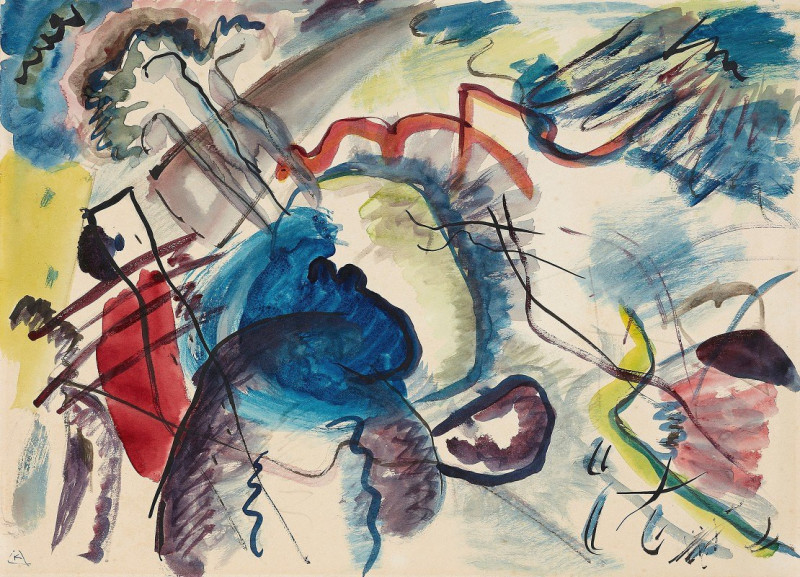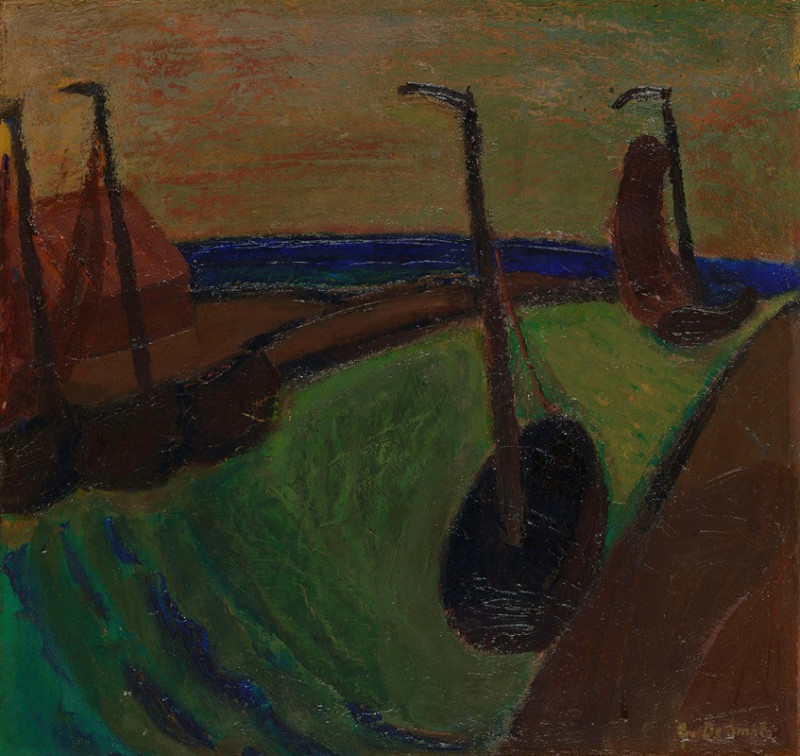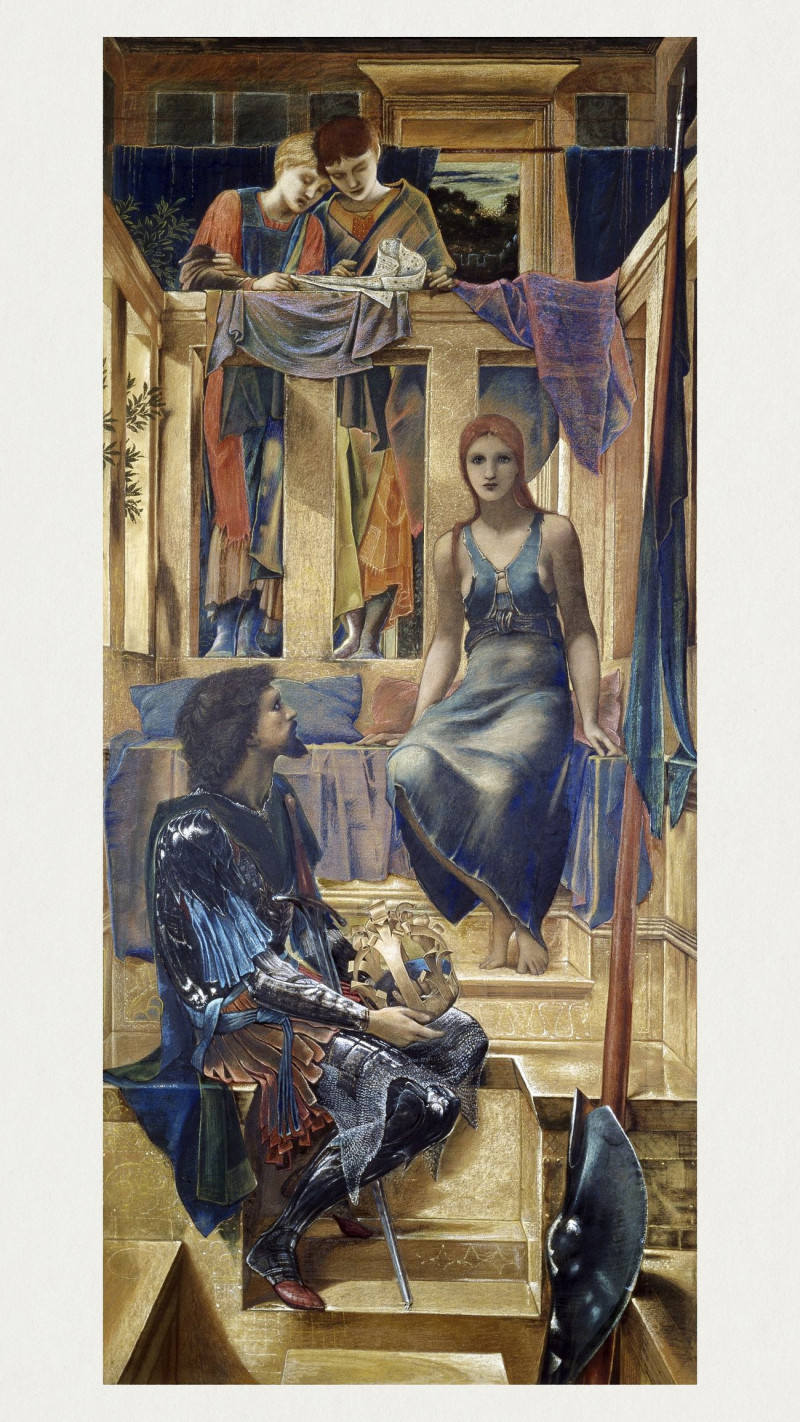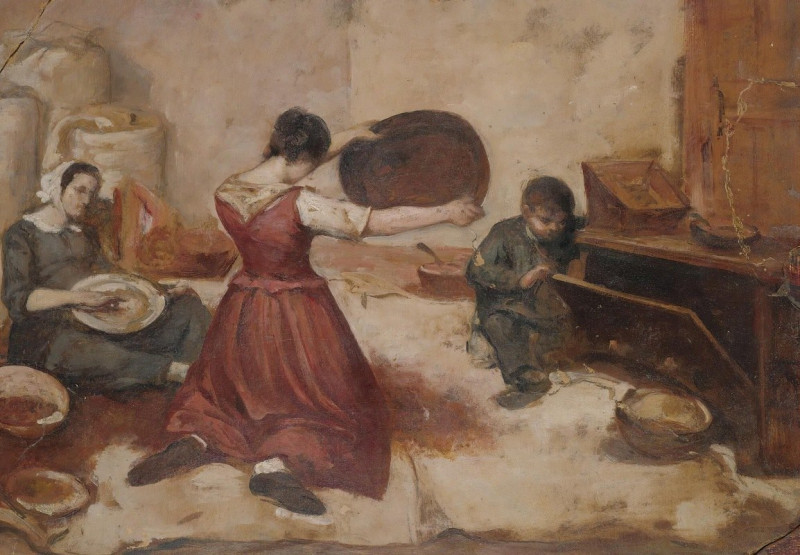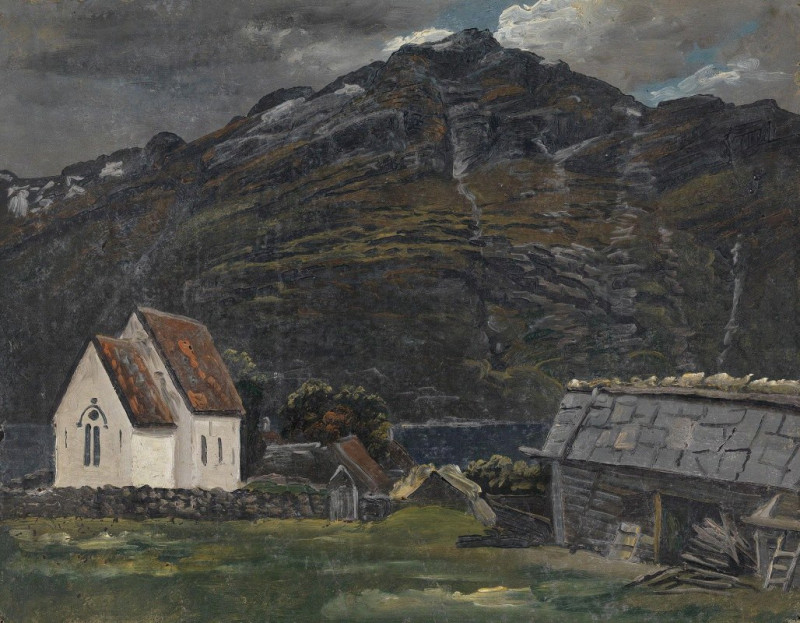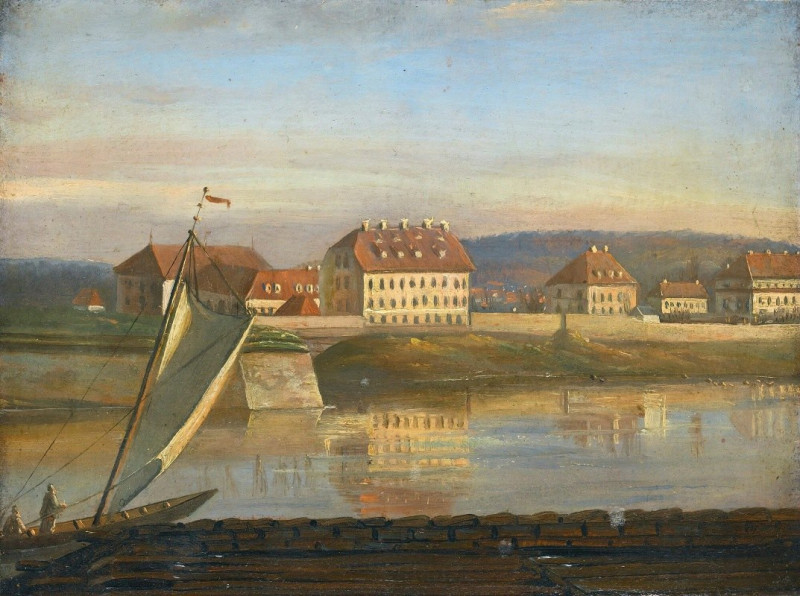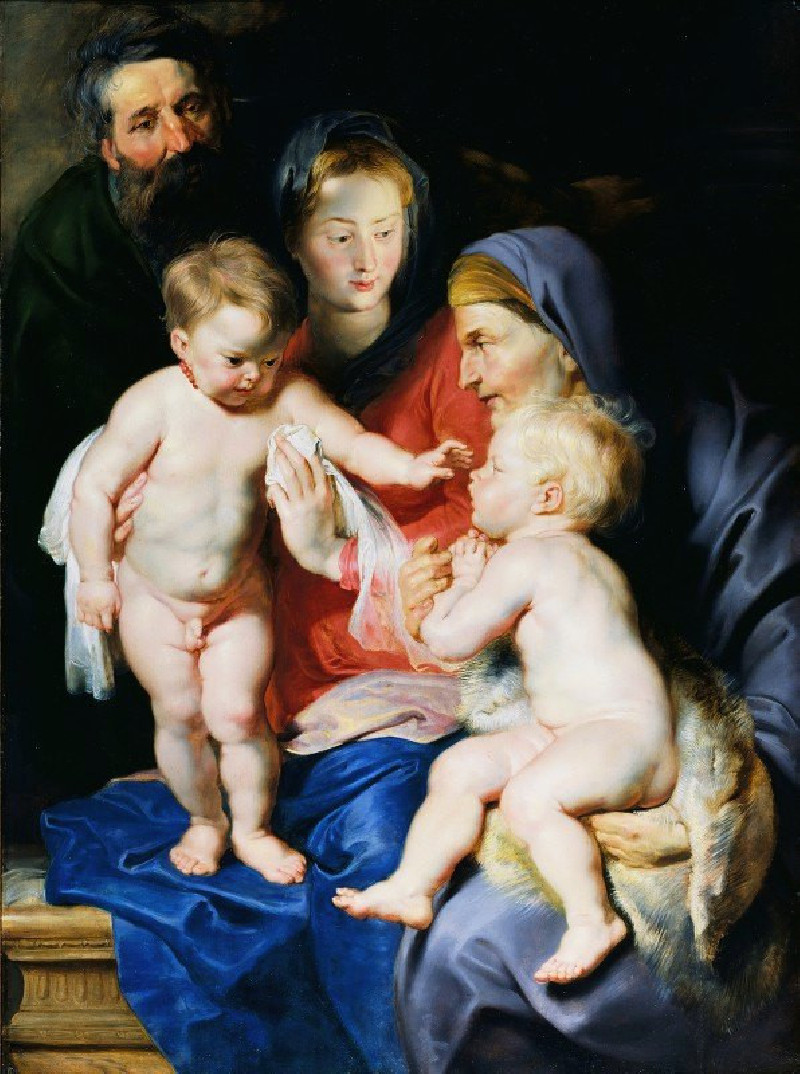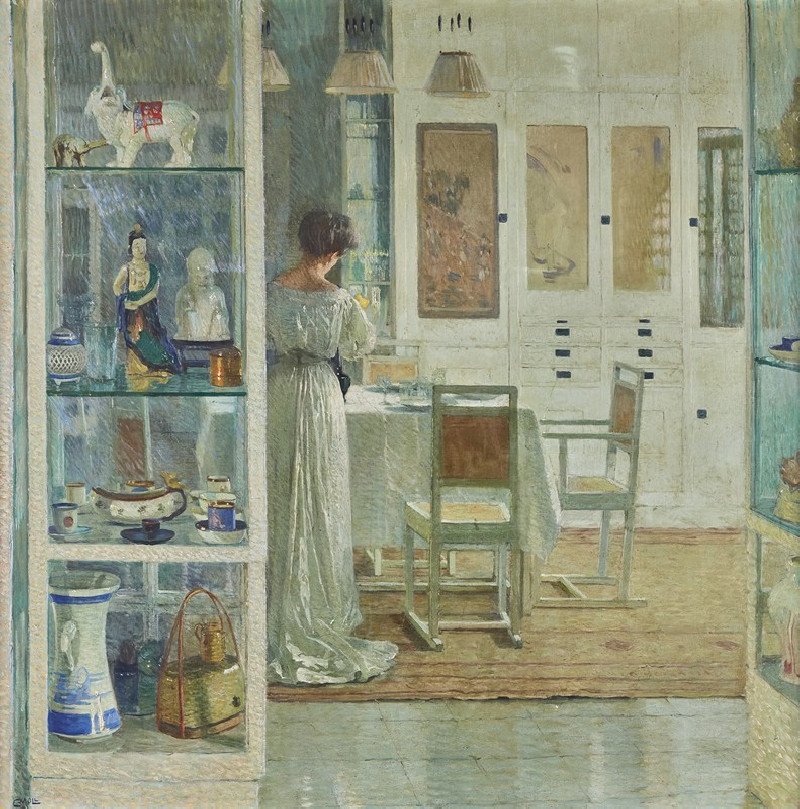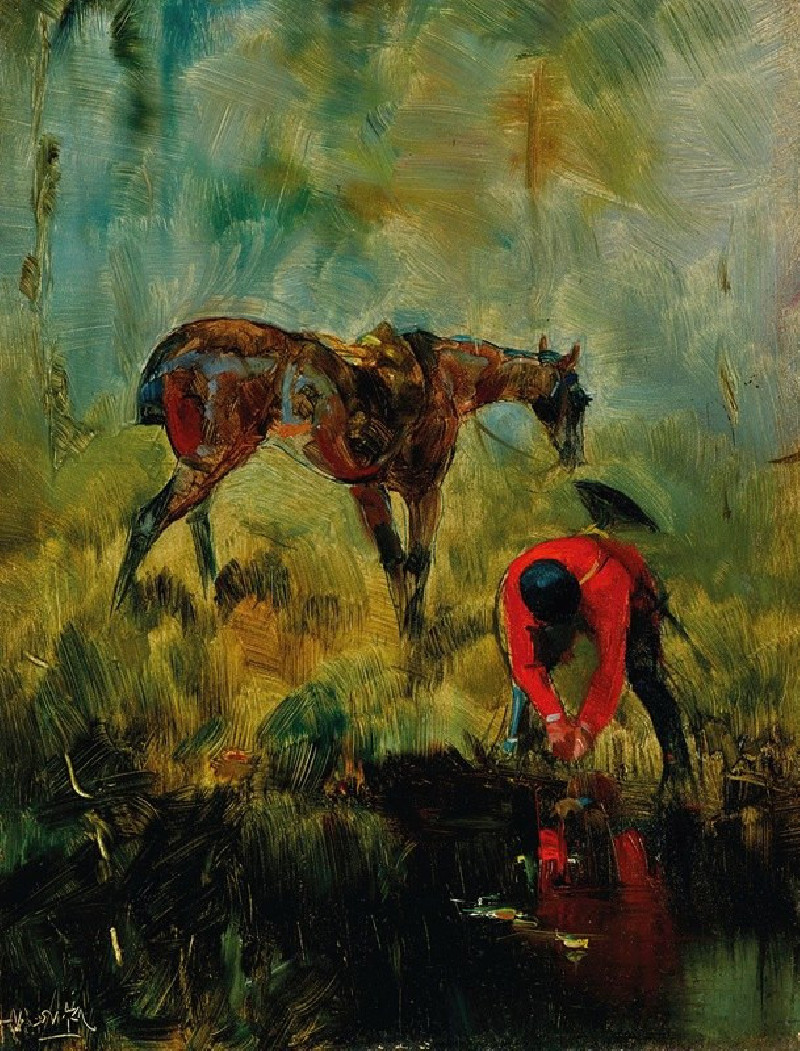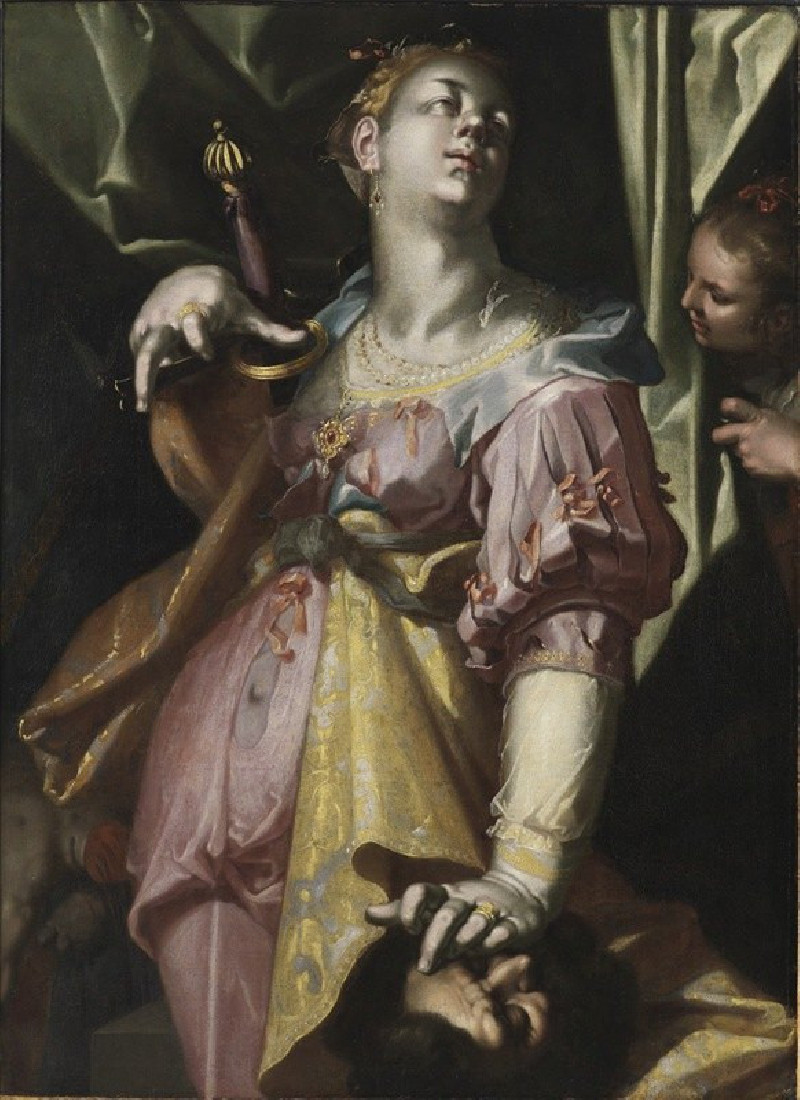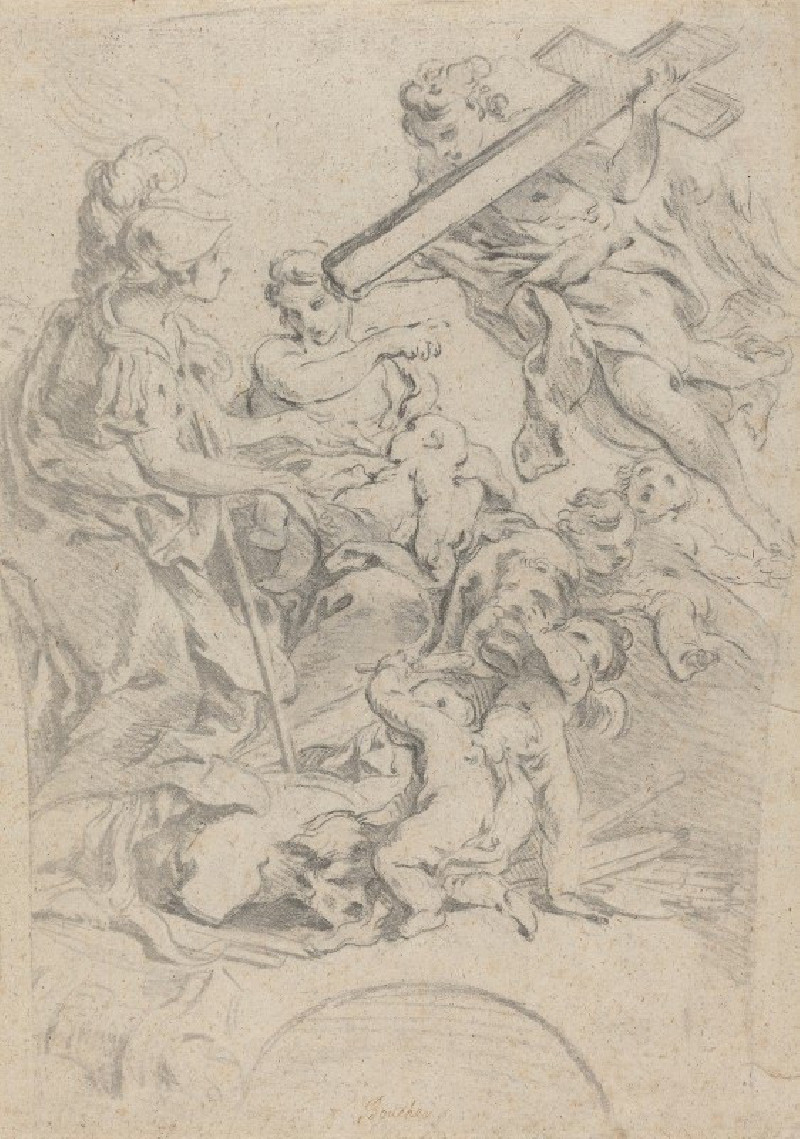Draft for ‘Picture with White Form’ (1913)
Technique: Giclée quality print
Recommended by our customers
More about this artwork
This striking painting, "Draft for ‘Picture with White Form’" by Wassily Kandinsky from 1913, reflects a tumultuous, vibrant mix of forms and colors that verge on the abstract. Kandinsky’s art from this period is significantly influenced by his theories regarding color and form which he believed could invoke psychological and emotional responses.In the artwork, we see a complex assortment of shapes and vivid colors entwining and overlapping with each other. The use of bold, sweeping curves and sharp angles creates a dynamic tension within the composition. The palette is rich and varied, consisting of deep blues, vibrant yellows, fiery reds, and grounding blacks. The titular 'white form' in the painting stands out as a calm, serene focal point amidst the surrounding chaos of color.Kandinsky's use of watercolor gives a fluid, translucent quality to the piece, with areas where the colors blend into one another and others where they stand distinct. Each element, from the soft gradients to the decisive brush strokes, seems carefully orchestrated to evoke a sense of movement and emotion. This painting, like much of Kandinsky’s work from this era, explores the boundary between abstraction and representation, inviting viewers to interpret the image through their personal lens and emotional response.
Delivery
Returns
Wassily Wassilyevich Kandinsky was a Russian painter and art theorist. Kandinsky is generally credited as the pioneer of abstract art. Born in Moscow, Kandinsky spent his childhood in Odessa, where he graduated at Grekov Odessa Art school. He enrolled at the University of Moscow, studying law and economics. Successful in his profession—he was offered a professorship (chair of Roman Law) at the University of Dorpat today Tartu, Estonia)—Kandinsky began painting studies (life-drawing, sketching and anatomy) at the age of 30.

